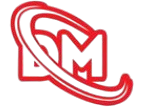Uniform and Workwear Manufacturers in Bangladesh – Dress Merchant is your trusted sourcing agent for premium apparel and garments manufacturers and exporters. We specialize in connecting global buyers with reliable factories that deliver high-quality uniforms and workwear, ensuring competitive prices, timely delivery, and compliance with international standards. Partner with Dress Merchant to streamline your sourcing process and grow your apparel business confidently.
Thank you for reading this post, don't forget to subscribe!
1. Overview of the Uniform and Workwear Industry in Bangladesh
1.1 Historical Development of Uniform Manufacturing
The uniform and workwear manufacturing sector in Bangladesh has witnessed remarkable growth over the past few decades. Initially, the industry was primarily focused on serving domestic needs, producing uniforms for schools, government institutions, and a limited number of local businesses. However, as Bangladesh’s garment industry gained global recognition for its competitive manufacturing capabilities, the uniform and workwear sector also evolved significantly.
This evolution was supported by improvements in textile production, better infrastructure, and increasing investment in technology. As a result, manufacturers have been able to diversify their offerings, catering to a broad spectrum of industries such as healthcare, hospitality, security services, corporate offices, and even industrial sectors that require specialized protective clothing. The shift from simple, utilitarian designs to customized, branded, and technologically enhanced workwear has opened new opportunities for manufacturers, both locally and internationally.
1.2 Economic Impact and Contribution to Bangladesh’s GDP
The uniform manufacturing sector is an important contributor to Bangladesh’s economy. It provides direct employment to millions of workers, many of whom are women, thereby supporting livelihoods and fostering economic inclusivity. The sector’s ability to generate substantial export earnings has further reinforced its economic significance.
Bangladesh has successfully positioned itself as a major exporter of textiles and garments globally, and uniform manufacturing forms a vital part of this export portfolio. The revenues from uniform exports add to the country’s foreign exchange reserves, which strengthens the national economy. Moreover, the industry stimulates growth in ancillary sectors like textile processing, dyeing, logistics, and packaging, creating a ripple effect of economic benefits.
The socio-economic impact extends beyond just economic figures. Many rural communities have seen improved living standards as garment and uniform factories provide stable job opportunities, skills training, and better working conditions. This has contributed to poverty reduction and social development in various regions across Bangladesh.
1.3 Key Market Drivers Influencing Growth
Several factors are driving the rapid growth of the uniform and workwear industry in Bangladesh. One of the main influences is the growing recognition among businesses and institutions of the importance of a professional appearance in establishing brand identity and trustworthiness. Uniforms serve not only as functional work attire but also as a marketing tool that strengthens corporate branding.
Additionally, increasing safety regulations in industrial and healthcare settings have raised demand for specialized workwear that complies with health and safety standards. This has pushed manufacturers to innovate and produce high-quality, durable, and protective uniforms.
Government policies also play a critical role in boosting the industry. Export incentives, infrastructure development, and support for industrial safety compliance encourage manufacturers to upgrade technology and improve product quality. These initiatives enhance competitiveness and enable Bangladesh’s uniform manufacturers to expand their footprint in international markets.
1.4 Challenges Facing the Industry
Despite its growth, the uniform manufacturing sector faces several challenges. One of the major issues is the volatility in raw material prices, especially cotton and synthetic fibers, which affects production costs and profit margins. Fluctuations in global supply chains can disrupt manufacturing schedules and lead to delays.
Compliance with international labor and environmental standards remains another challenge. As global buyers increasingly demand ethical sourcing and sustainable practices, manufacturers must invest in improved working conditions, fair wages, and eco-friendly processes to maintain their market position.
Moreover, competition from other low-cost manufacturing countries like Vietnam, Cambodia, and India pressures Bangladeshi manufacturers to constantly innovate and improve quality. To overcome these challenges, the industry must emphasize quality assurance, sustainable production, and technological advancements, ensuring long-term growth and competitiveness on the global stage.
2. Types of Uniforms and Workwear Produced in Bangladesh
Bangladesh has established itself as a significant hub for the production of diverse types of uniforms and workwear, catering to multiple industries with specialized needs. The country’s garment manufacturing sector offers a comprehensive range of products designed not only for functionality but also for safety, comfort, and professional appearance. Below is an overview of the major categories of uniforms and workwear produced in Bangladesh.
2.1 Industrial and Safety Workwear
The industrial and safety workwear produced in Bangladesh is engineered to meet stringent safety standards required by high-risk industries. Manufacturers produce a wide variety of garments such as high-visibility jackets that incorporate reflective strips to ensure workers are easily seen in low-light or hazardous environments. These jackets are commonly used in construction zones, roadworks, and logistics operations.
Flame-resistant clothing is another crucial category, designed to protect workers in sectors such as oil and gas, electrical utilities, and manufacturing plants where exposure to fire or sparks is a risk. These garments are made from specialized fabrics that resist ignition and reduce burn injuries.
Durable coveralls and protective suits are also widely manufactured. These are designed for heavy-duty use, often featuring reinforced seams and materials that withstand wear and tear. They are essential for industries like automotive assembly, mining, and chemical processing, where employees need reliable protection during their daily tasks.
2.2 Corporate and Business Uniforms
Bangladesh’s garment industry also excels in producing corporate and business uniforms that promote brand identity and professionalism. These uniforms typically include formal shirts, tailored trousers, skirts, blazers, and accessories such as ties and scarves.
Manufacturers pay close attention to fabric quality and design to ensure the uniforms provide comfort during long working hours while maintaining a polished look. Breathable cotton blends, wrinkle-resistant polyester, and stretchable fabrics are commonly used to enhance wearability.
Corporate uniforms can be customized with company logos, colors, and stylistic elements that reflect the organization’s ethos. This helps businesses foster a cohesive and recognizable image among employees, clients, and customers.
2.3 Hospitality and Service Industry Attire
The hospitality sector is a significant consumer of uniforms produced in Bangladesh. Garments designed for hotels, restaurants, and service providers focus on combining elegance with practicality.
Chef coats, for example, are crafted from stain-resistant and breathable materials that allow chefs to work comfortably in hot kitchen environments while maintaining a clean and professional appearance. Similarly, housekeeping uniforms are designed for durability and ease of movement, often incorporating fabrics that can endure frequent washing.
Concierge and front-desk uniforms typically emphasize sharp tailoring and sophisticated styling to reflect the establishment’s luxury and service standards. The fabrics used in these uniforms are chosen not only for comfort but also for their ability to resist stains and wrinkles, ensuring staff always look neat.
2.4 Healthcare and Medical Uniforms
In the healthcare sector, uniforms such as medical scrubs, lab coats, and nursing attire produced in Bangladesh are designed with hygiene, safety, and comfort in mind. These garments adhere to international standards for healthcare clothing, ensuring they support the demanding environment of hospitals and clinics.
Many manufacturers incorporate antimicrobial fabrics that help reduce the risk of contamination and infection, which is critical in medical settings. Additionally, the use of easy-care fabrics allows for frequent laundering without loss of shape or color, maintaining a professional look over time.
The design of healthcare uniforms also prioritizes ease of movement and breathability, helping medical professionals stay comfortable during long shifts while ensuring functionality and cleanliness.
3. Manufacturing Process and Quality Assurance
3.1 Sourcing of Raw Materials
The foundation of any high-quality uniform lies in the careful selection and sourcing of raw materials. In Bangladesh, manufacturers place significant emphasis on obtaining premium-grade fabrics both locally and internationally. The raw materials commonly used include superior cotton, polyester blends, and advanced technical fabrics that offer an ideal balance between durability, comfort, and easy maintenance. Cotton is favored for its breathability and softness, making it comfortable for prolonged wear, while polyester blends provide wrinkle resistance and enhanced longevity.
Local sourcing plays a vital role in supporting the domestic textile industry and ensuring quicker turnaround times, while international suppliers contribute specialized materials such as moisture-wicking fabrics or fire-retardant textiles that meet specific uniform requirements. This strategic sourcing approach enables manufacturers to cater to diverse industries ranging from corporate uniforms to healthcare and hospitality, each demanding different fabric characteristics.
Moreover, manufacturers often establish long-term partnerships with trusted suppliers to maintain consistency in fabric quality. Rigorous testing of raw materials before production begins ensures that only textiles meeting stringent standards proceed to the next stage, significantly reducing defects and ensuring uniform performance in the finished product.
3.2 Cutting and Sewing Technologies
Once the raw materials are sourced, the cutting and sewing phases commence, which are crucial to the overall fit, appearance, and durability of the uniform. Bangladesh’s uniform manufacturers utilize cutting-edge automated cutting machines capable of precise and efficient fabric cutting. These machines reduce fabric wastage by optimizing pattern layouts and cutting multiple layers simultaneously with pinpoint accuracy.
Alongside technology, skilled sewing teams bring craftsmanship and attention to detail to each garment. Experienced workers expertly handle complex stitching patterns, reinforcements, and finishing touches that contribute to uniform longevity and visual appeal. Many factories integrate Computer-Aided Design (CAD) systems, which streamline the design-to-production workflow. CAD systems allow for accurate pattern making, grading for different sizes, and easy modifications, thereby enhancing production speed while maintaining consistent sizing across batches.
The blend of advanced machinery and human expertise ensures that the final uniforms maintain a high standard of quality, with consistent seams, uniform stitching, and minimal defects.
3.3 Quality Control and Inspection Procedures
Quality assurance is embedded at multiple stages throughout the manufacturing process to guarantee that each uniform meets customer expectations and regulatory requirements. Initially, fabric undergoes thorough inspection for defects such as color inconsistencies, weaving flaws, or contamination.
During production, seam strength tests assess the durability of stitched areas to ensure they withstand regular wear and washing. Final product evaluation involves comprehensive checks for correct sizing, colorfastness, and overall workmanship. Many manufacturers follow internationally recognized quality standards such as ISO 9001, which outline systematic approaches to quality management, ensuring continual improvement and traceability.
Furthermore, certifications like OEKO-TEX Standard 100 guarantee that textiles are free from harmful substances, providing added assurance to customers regarding product safety, especially for uniforms in sensitive sectors like healthcare and food service.
3.4 Compliance with International Standards
Beyond product quality, Bangladesh uniform manufacturers demonstrate a strong commitment to ethical production and sustainability. Adherence to international labor standards such as WRAP (Worldwide Responsible Accredited Production) and SA8000 ensures fair wages, safe working conditions, and respect for workers’ rights throughout the supply chain.
Environmental responsibility is also a priority, with many manufacturers adopting Global Organic Textile Standard (GOTS) certifications. GOTS-certified production guarantees organic fibers are processed using environmentally friendly methods, reducing the ecological footprint of textile manufacturing.
Such certifications not only boost brand reputation but also meet the increasing demand from global clients for ethically and sustainably produced uniforms. These comprehensive standards create a balance between delivering high-quality products and fostering socially responsible manufacturing practices in Bangladesh.
4. Innovation and Technology in Uniform Manufacturing
The uniform manufacturing industry in Bangladesh has witnessed significant advancements driven by innovation and technology. These developments are not only improving product quality and efficiency but also addressing evolving customer demands for functionality, customization, and sustainability. The integration of cutting-edge technologies is transforming traditional manufacturing processes, positioning Bangladesh as a competitive hub in the global uniform market.
4.1 Use of Technical and Smart Fabrics
One of the key innovations in uniform manufacturing is the adoption of technical and smart fabrics. Manufacturers in Bangladesh are increasingly incorporating textiles that offer enhanced performance features such as moisture-wicking, UV protection, and antimicrobial properties. These smart fabrics improve the overall comfort and durability of uniforms, making them more suitable for demanding work environments.
For instance, moisture-wicking fabrics help keep the wearer dry by drawing sweat away from the body, which is particularly beneficial in hot and humid climates. UV protective fabrics shield wearers from harmful ultraviolet rays during outdoor work. Antimicrobial treatments embedded in textiles reduce the growth of bacteria and odors, ensuring hygiene and freshness throughout long working hours. These advancements make uniforms not only functional but also improve wearer satisfaction and productivity.
4.2 Automation and Industry 4.0 Adaptation
Bangladesh’s uniform manufacturers are rapidly embracing Industry 4.0 technologies to enhance operational efficiency and product quality. The use of Internet of Things (IoT)-enabled machinery enables real-time monitoring and control of production lines, ensuring consistency and minimizing errors. Automated inventory management systems help streamline the supply chain by tracking raw materials and finished products, reducing waste and optimizing stock levels.
Automation also helps reduce lead times, allowing manufacturers to meet tight deadlines without compromising quality. Robotics and computer-aided manufacturing (CAM) are being deployed in cutting, stitching, and quality inspection processes. These innovations reduce human error and labor costs while boosting output capacity. By integrating smart manufacturing techniques, Bangladesh’s uniform producers remain competitive in a rapidly evolving global market.
4.3 Customization through Digital Printing and Embroidery
The demand for customized uniforms has increased as organizations seek to reinforce their brand identity. Digital printing and advanced embroidery technologies enable manufacturers to meet this need efficiently. Digital printing allows for high-resolution, full-color designs to be applied directly onto fabric with precision and speed. This technology supports complex patterns, logos, and color gradients that were difficult to achieve with traditional printing methods.
Similarly, computerized embroidery machines offer detailed stitching capabilities for logos, employee names, and intricate designs. These machines reduce production time and increase design accuracy, allowing manufacturers to provide personalized uniforms without extensive manual labor. The ability to customize uniforms at scale enhances corporate branding and employee recognition, providing clients with a valuable marketing tool.
4.4 Sustainability Initiatives through Technology
Sustainability has become a vital focus area in uniform manufacturing, and technology plays a crucial role in advancing eco-friendly practices. Several manufacturers in Bangladesh are adopting sustainable fibers such as recycled polyester and organic cotton, reducing reliance on virgin resources. Innovations in dyeing technology, including waterless and low-water methods, significantly decrease water consumption and pollutant discharge.
Energy-efficient machinery further reduces the carbon footprint of production processes. Some manufacturers are also implementing waste recycling and reuse systems within their factories to minimize environmental impact. These green initiatives not only appeal to environmentally conscious clients but also comply with increasingly stringent global standards for sustainable textile production. By leveraging technology for sustainability, Bangladesh’s uniform manufacturers demonstrate commitment to responsible manufacturing while maintaining economic viability.
5. Key Sectors Served by Uniform Manufacturers in Bangladesh
Uniform manufacturers in Bangladesh cater to a wide range of industries, providing tailored solutions that meet the unique requirements of each sector. Their ability to blend quality, functionality, and affordability has made them preferred suppliers for many key sectors globally. Below are some of the major industries that benefit from the expertise of Bangladesh’s uniform manufacturers.
5.1 Industrial and Manufacturing Companies
The industrial and manufacturing sector demands uniforms that go beyond aesthetics; they must prioritize safety, durability, and comfort. Workers in heavy industries such as construction, oil and gas, and factories face harsh conditions daily, including exposure to chemicals, heat, and physical hazards.
To address these challenges, uniform manufacturers in Bangladesh produce garments using rugged, high-performance fabrics designed to withstand wear and tear. Features such as reinforced stitching, double-layered elbows, and heavy-duty buttons ensure long-lasting durability. Additionally, safety elements like reflective strips and flame-retardant materials are incorporated to enhance visibility and protection, especially for workers in low-light or hazardous environments.
Comfort is also a critical factor. The manufacturers ensure that uniforms allow ease of movement and breathability, helping workers maintain productivity and focus throughout their shifts.
5.2 Hospitality and Tourism
In the hospitality and tourism sector, uniforms serve a dual purpose: they must be visually appealing while also being functional for employees who work long hours in fast-paced settings. Bangladesh’s uniform manufacturers create stylish uniforms that align with the brand identity of hotels, resorts, restaurants, and travel companies.
These uniforms often feature elegant designs, vibrant colors, and premium fabrics that are easy to maintain. Practical considerations include wrinkle resistance, stain repellence, and moisture-wicking properties to keep staff looking fresh and professional during extended shifts.
Furthermore, manufacturers collaborate closely with clients to customize uniforms according to roles within the hospitality industry, from front desk staff to housekeeping and culinary teams. This attention to detail ensures that uniforms are appropriate for each job function while enhancing the overall guest experience.
5.3 Healthcare and Pharmaceuticals
The healthcare industry places high demands on uniform standards, prioritizing hygiene, comfort, and professionalism. Bangladesh’s uniform manufacturers supply hospitals, clinics, and pharmaceutical companies with scrubs, lab coats, and other medical apparel that meet international health and safety regulations.
Fabrics used in healthcare uniforms are often antimicrobial, breathable, and easy to sterilize, helping to reduce the risk of contamination. The designs promote a clean and professional appearance, which is crucial in building patient trust.
Moreover, the manufacturers understand the need for uniforms that accommodate long shifts and varying climates, providing options that combine durability with comfort for doctors, nurses, and other medical staff.
5.4 Education and Government Institutions
Educational institutions and government agencies rely heavily on uniform suppliers in Bangladesh due to their ability to deliver high-quality products at competitive prices. Uniforms for schools, colleges, and government offices play a significant role in fostering a sense of unity, discipline, and professionalism among students and employees alike.
Manufacturers offer a broad range of fabrics and styles suitable for different age groups and job roles, ensuring durability to withstand daily use. The ability to customize uniforms with institutional logos and colors further enhances identity and pride within these communities.
Additionally, the cost-effective nature of production in Bangladesh allows large-scale orders to be fulfilled efficiently, making these manufacturers dependable partners for public sector organizations.
6. Export Potential and Global Reach of Bangladesh Uniform Manufacturers
6.1 Major Export Destinations
Bangladesh has emerged as a significant player in the global uniform and workwear market, exporting its products to a wide array of countries across different continents. The primary export destinations include the United States, various countries in Europe, Australia, and the Middle East. These markets are highly competitive and demand high standards of quality, timely delivery, and cost-effectiveness. Bangladesh’s manufacturers have successfully positioned themselves by offering uniforms that balance affordability with durability and style, making them an attractive option for buyers worldwide.
The competitive pricing offered by Bangladeshi manufacturers is a major factor behind their strong export performance. Lower labor costs combined with efficient production techniques allow for manufacturing high-quality uniforms at prices that appeal to international buyers. Moreover, Bangladesh’s ability to meet large volume orders without compromising on quality has helped it secure long-term contracts with major multinational companies and government agencies across these regions.
6.2 Role of Trade Agreements and Free Zones
Trade agreements and the establishment of Export Processing Zones (EPZs) have played a pivotal role in boosting the export potential of Bangladesh’s uniform manufacturers. These agreements facilitate reduced tariffs, simplified customs procedures, and other trade facilitation measures that directly benefit manufacturers aiming to reach global markets. By being part of preferential trade agreements with several countries and trading blocs, Bangladesh can offer its products with more attractive pricing compared to competitors from countries without such benefits.
The EPZs provide an enabling environment for manufacturers by offering tax holidays, duty-free import of raw materials, and infrastructure support. These zones significantly reduce production costs and improve supply chain efficiency. Additionally, the presence of these zones attracts foreign investment, which brings in advanced technology and better management practices, further enhancing export capabilities. As a result, manufacturers operating within EPZs have a competitive edge in meeting the demands of international buyers swiftly and cost-effectively.
6.3 Customization for International Clients
One of the key strengths of Bangladesh’s uniform manufacturers lies in their ability to customize products according to the specific requirements of international clients. This customization extends beyond basic size and color options to include fabric selection, design modifications, and compliance with regulatory standards relevant to the destination country. For example, certain countries mandate fire-retardant fabrics or specific safety features in workwear, which Bangladeshi manufacturers are well-equipped to incorporate.
Furthermore, cultural preferences and aesthetic tastes vary widely among international buyers. Manufacturers in Bangladesh take these factors into account, offering design flexibility that aligns with the brand image and functional needs of their clients. This adaptability enhances customer satisfaction and fosters repeat business, ultimately expanding Bangladesh’s footprint in the global uniform market.
6.4 Branding and Reputation on the Global Stage
Over the years, Bangladesh uniform manufacturers have steadily built a reputation for reliability and professionalism on the international stage. Meeting stringent quality standards and consistently adhering to delivery schedules have become hallmarks of their service. Buyers increasingly trust Bangladeshi manufacturers for their ability to deliver high-quality uniforms that comply with international standards such as ISO certifications, which adds to their credibility.
The emphasis on maintaining robust quality control processes and transparent communication has helped manufacturers develop strong relationships with overseas clients. This reputation for reliability, coupled with the country’s growing manufacturing infrastructure, positions Bangladesh as a trusted source within the global supply chain. As a result, many international companies now view Bangladesh not only as a cost-effective sourcing destination but also as a partner capable of supporting their long-term uniform procurement strategies.
7. Sustainable and Ethical Manufacturing Practices
Sustainable and ethical manufacturing has become a vital focus in today’s global textile and garment industry. Consumers and businesses alike are increasingly aware of the environmental and social impacts of production processes. Leading manufacturers recognize that adopting sustainable and ethical practices is not only a moral responsibility but also a strategic advantage that can improve brand reputation, reduce costs, and ensure long-term viability.
7.1 Environmental Responsibility Initiatives
Many top manufacturers implement comprehensive environmental responsibility initiatives to minimize their ecological footprint. One key approach is the establishment of waste reduction programs, which aim to lower the amount of fabric scraps, packaging waste, and water consumption generated during production. By recycling leftover materials and repurposing scraps, manufacturers not only reduce landfill waste but also cut down on raw material costs.
Moreover, the shift towards using eco-friendly dyes and non-toxic chemicals is gaining momentum. These dyes reduce harmful emissions and water pollution, contributing to cleaner production environments and safer downstream ecosystems. Water recycling systems and energy-efficient machinery are increasingly incorporated to reduce overall resource consumption, demonstrating a proactive approach toward sustainability.
Sustainable manufacturing is also supported by innovations such as biodegradable packaging and renewable energy use, which collectively reduce the environmental burden associated with garment production.
7.2 Fair Labor Practices and Worker Welfare
Ethical manufacturing extends beyond environmental concerns to include the welfare of workers who form the backbone of the industry. Responsible manufacturers emphasize creating safe, healthy, and respectful working environments. Ensuring proper safety measures, ergonomic workspaces, and regular health check-ups helps protect workers from occupational hazards.
Fair wages and timely payment practices are critical components of ethical labor standards. Manufacturers committed to fair labor practices strive to meet or exceed local minimum wage laws and often offer additional benefits such as healthcare, paid leave, and skill development programs. These initiatives contribute to higher employee satisfaction and retention, while reinforcing the company’s positive social image.
Furthermore, many manufacturers participate in social welfare programs that support workers’ families and communities. This holistic approach addresses not only immediate working conditions but also broader social well-being, fostering loyalty and trust.
7.3 Certifications Promoting Sustainability
Gaining recognized certifications is an essential step for manufacturers to validate their commitment to sustainable and ethical production. Certifications such as the Global Organic Textile Standard (GOTS) ensure that textiles are produced organically and processed without harmful chemicals. This certification covers every stage, from raw material harvesting to environmentally and socially responsible manufacturing.
Similarly, Fair Trade certification guarantees that products are made under equitable labor conditions, promoting fair wages and safe working environments. These certifications reassure customers and business partners that the products they purchase meet rigorous sustainability criteria.
By obtaining such certifications, manufacturers improve their marketability and open doors to international markets that demand verified sustainable and ethical products. This also fosters transparency and accountability throughout the supply chain.
7.4 Community Engagement and Corporate Social Responsibility
Beyond internal manufacturing practices, many companies actively engage with local communities to demonstrate corporate social responsibility (CSR). Initiatives often include educational sponsorship programs that provide scholarships, vocational training, or school supplies to underprivileged children in manufacturing regions.
Healthcare support, such as free medical camps and health awareness campaigns, is another common CSR activity. These programs help improve overall community health and create goodwill toward the company.
By investing in the social development of communities, manufacturers build stronger relationships and contribute to the socioeconomic progress of their operating areas. This community engagement reflects a long-term commitment that transcends pure profit motives, underscoring the company’s role as a responsible corporate citizen.
8. Custom Uniform Solutions and Value-Added Services
8.1 Bespoke Design Services
Custom uniform manufacturers excel in providing bespoke design services that go far beyond simple garment production. These services are carefully tailored to meet the unique needs of each client, ensuring that every uniform reflects the brand’s identity and values. Starting with fabric selection, manufacturers offer a broad range of materials that suit various environments, climates, and industry requirements. Clients can choose from performance fabrics that wick moisture and resist stains to durable textiles designed for heavy-duty use.
Fitting and styling are equally critical in bespoke design services. Skilled designers and tailors work meticulously to create uniforms that not only look professional but also provide maximum comfort and ease of movement for employees. This focus on fit enhances employee satisfaction and productivity, which translates into a positive brand image.
Additionally, bespoke design services often incorporate client branding elements such as logos, colors, and unique patterns. This level of customization helps companies maintain consistency across all staff appearances, reinforcing brand recognition and corporate identity in the marketplace.
8.2 Inventory Management and Just-in-Time Delivery
Modern uniform manufacturers provide advanced logistics solutions that streamline inventory management for their clients. One of the key advantages is the implementation of just-in-time delivery systems, which allow businesses to significantly reduce the amount of stock they need to hold on-site. This approach minimizes storage costs and decreases the risk of excess inventory becoming obsolete or wasted.
By leveraging technology such as inventory tracking software and automated reorder alerts, manufacturers can coordinate closely with clients to replenish stock exactly when needed. This not only ensures that employees always have access to fresh, quality uniforms but also helps organizations avoid overstocking, which ties up valuable capital.
Moreover, these inventory management solutions often include customizable reporting tools. Clients receive real-time updates on stock levels, usage rates, and delivery schedules, empowering them to make informed decisions about their uniform needs. The combination of just-in-time delivery and efficient inventory control supports sustainable business practices by reducing waste and enhancing operational efficiency.
8.3 After-Sales Support and Warranty Policies
A critical aspect of value-added services in custom uniform manufacturing is the provision of reliable after-sales support. Manufacturers understand that uniform needs extend beyond the initial purchase, so they offer comprehensive warranty policies that cover defects in materials and workmanship. These warranties provide peace of mind to clients, assuring them that their investment is protected.
Repair services are another important component of after-sales care. Instead of replacing entire uniforms due to minor damages such as tears, loose seams, or missing buttons, clients can access professional repair options that extend the lifespan of their garments. This service reduces costs and contributes to sustainability by promoting reuse rather than disposal.
Furthermore, customer service teams are readily available to address inquiries, handle exchanges, and provide guidance on uniform care. Such ongoing support strengthens client relationships and builds trust, encouraging repeat business and long-term partnerships.
8.4 Collaborative Product Development
Collaboration is at the heart of successful uniform manufacturing. Many manufacturers adopt a client-centric approach that involves working closely with customers from the initial concept stage through to the final product delivery. This partnership ensures that the uniforms fulfill all specified functional, aesthetic, and budgetary criteria.
During the development process, clients can provide feedback and request modifications, allowing the manufacturer to tailor designs precisely to their operational needs. This iterative process helps to identify potential issues early on, saving time and resources.
The collaborative approach also facilitates innovation. Manufacturers often bring their expertise in textile technology, garment construction, and industry trends to the table, suggesting creative solutions that improve durability, comfort, or appearance. This synergy results in uniforms that not only meet but often exceed client expectations.
In summary, custom uniform solutions combined with value-added services create a comprehensive package that supports brand image, operational efficiency, and customer satisfaction. From bespoke design and inventory management to after-sales care and collaborative development, these services provide measurable benefits that help organizations maintain a professional and consistent workforce appearance.
9. Trends Shaping the Future of Uniform and Workwear Manufacturing
The uniform and workwear manufacturing industry is undergoing significant transformations influenced by evolving consumer preferences, technological advancements, and social shifts. These trends are not only shaping the design and production processes but also redefining the overall market dynamics. Below, we explore some of the most impactful trends that are expected to guide the future of this sector.
9.1 Increasing Demand for Sustainable Materials
One of the most prominent trends driving change in uniform and workwear manufacturing is the growing emphasis on sustainability. As environmental consciousness rises among consumers, businesses are under increasing pressure to minimize their ecological footprint. This shift is prompting manufacturers to incorporate eco-friendly materials such as organic cotton, recycled polyester, and biodegradable fibers into their production lines.
Using sustainable fabrics is no longer a niche market but a mainstream demand. These materials often require less water, fewer chemicals, and less energy during cultivation and processing, reducing the overall environmental impact. Furthermore, companies are adopting certifications like Global Organic Textile Standard (GOTS) and OEKO-TEX to validate their commitment to sustainable practices. This trend is expected to continue growing as regulatory bodies implement stricter environmental guidelines and consumers increasingly favor brands that prioritize sustainability.
9.2 Integration of Smart Wearables
Technological innovation is making its way into uniforms through the integration of smart wearables. These garments embedded with sensors and wearable technology serve multiple purposes, especially in industries where safety and health monitoring are critical. For example, smart uniforms can track vital signs, monitor fatigue levels, detect hazardous environmental conditions, and provide real-time alerts to workers and supervisors.
High-risk industries such as construction, mining, healthcare, and manufacturing are at the forefront of adopting this technology. These smart wearables help reduce workplace accidents, improve employee well-being, and enhance overall productivity. The data collected can also be used for predictive analytics and preventive maintenance, thereby adding value beyond the immediate safety benefits. As wearable technology becomes more affordable and accessible, its integration into workwear is expected to become a standard practice in the near future.
9.3 Shift Towards Gender-Inclusive Designs
The workforce is becoming increasingly diverse, and this demographic shift is reflected in the growing demand for gender-inclusive and size-inclusive uniform designs. Traditional uniform manufacturing often focused on binary gender options and limited size ranges, which failed to accommodate the diverse body types and gender identities present in modern workplaces.
Manufacturers are now responding by creating more versatile uniform collections that cater to all employees regardless of gender or body shape. This approach not only promotes inclusivity and equality but also improves employee comfort and satisfaction. Gender-neutral designs often feature adjustable fits, unisex cuts, and flexible sizing systems. As companies embrace diversity and inclusion as core values, the demand for such uniforms is projected to rise steadily, encouraging manufacturers to innovate accordingly.
9.4 Digital Transformation and E-commerce
The digital revolution is transforming the uniform and workwear industry by streamlining ordering, customization, and delivery processes. Online platforms now allow companies to browse extensive catalogs, place bulk orders, and customize uniforms with logos, names, and other specifications from the convenience of their desks.
This digital transformation is reducing lead times and minimizing errors in procurement. E-commerce also opens up new markets for manufacturers by enabling them to reach clients beyond their traditional geographic boundaries. Moreover, advanced tools like virtual fitting rooms and augmented reality are enhancing the customer experience by helping buyers visualize products before purchase.
Cloud-based inventory management and automated workflows further optimize supply chains, making the entire process more efficient and cost-effective. As businesses continue to embrace digital solutions, manufacturers that invest in robust e-commerce infrastructure and innovative digital tools will gain a competitive edge in the future uniform market.
10. Choosing the Right Uniform and Workwear Manufacturer in Bangladesh
Selecting the right uniform and workwear manufacturer is a critical decision for any business looking to provide quality apparel to its employees. Bangladesh, known for its robust garment industry, offers numerous options, but making the right choice involves careful evaluation of several key factors. These considerations ensure not only product quality but also timely delivery, ethical manufacturing, and overall satisfaction.
10.1 Evaluating Quality and Compliance Credentials
One of the foremost criteria when choosing a manufacturer is the assurance of quality. Clients should look for manufacturers that hold recognized certifications such as ISO standards or compliance with international labor and environmental regulations. These credentials are a testament to a manufacturer’s commitment to producing uniforms that meet stringent quality benchmarks.
Beyond certifications, it is important to review the manufacturer’s track record. This can include inspecting samples, checking client testimonials, or visiting production facilities when possible. Transparency in manufacturing processes and adherence to labor laws also contribute to ethical sourcing, which many businesses now prioritize. Ensuring compliance with environmental standards is equally important in today’s eco-conscious market, reflecting a manufacturer’s responsibility towards sustainability.
10.2 Assessing Production Capacity and Scalability
A manufacturer’s ability to handle your current order volume is just the beginning. It is essential to evaluate their production capacity and flexibility to accommodate growth or sudden spikes in demand. Understanding whether the manufacturer has modern machinery, a skilled workforce, and efficient workflows can help predict their ability to deliver consistent quality on time.
Scalability is another crucial factor. As your business expands, your uniform requirements might increase or require more customization options. Choosing a manufacturer with scalable operations means they can adapt to larger or more complex orders without compromising quality or lead times. Discussing lead times, minimum order quantities, and contingency plans for rush orders provides valuable insights into their operational readiness.
10.3 Customer Service and Communication Channels
Effective communication is the backbone of a successful partnership with a uniform manufacturer. Clear and timely communication helps avoid misunderstandings related to design specifications, order quantities, and delivery schedules. It also facilitates quick resolution of any issues that may arise during production.
Manufacturers who offer dedicated account managers or customer support teams typically provide a smoother ordering experience. Accessible communication channels such as phone, email, and instant messaging ensure that clients can reach out conveniently. Moreover, proactive updates on order status, challenges, or delays contribute to building trust and transparency.
10.4 Cost-Effectiveness and Value for Money
While price is always a consideration, it should not be the sole deciding factor. Clients should aim for a balanced approach, weighing the cost against quality and service levels. A low price with poor quality or unreliable delivery can ultimately cost more in returns, reorders, and brand reputation.
Assessing value for money means considering the durability of the uniforms, the manufacturer’s ability to customize according to brand requirements, and the after-sales support offered. Manufacturers who offer competitive pricing alongside consistent quality and excellent service tend to deliver long-term satisfaction. Negotiating payment terms and bulk order discounts can also enhance cost-effectiveness.
In conclusion, choosing the right uniform and workwear manufacturer in Bangladesh requires a thorough evaluation of quality, capacity, communication, and cost. Making an informed decision ensures your business receives uniforms that represent your brand well while fostering a reliable and ethical supply partnership.
Conclusion: Uniform and Workwear Manufacturers in Bangladesh
Bangladesh’s uniform and workwear manufacturing industry stands out as a dynamic and evolving sector marked by robust growth, technological innovation, and a commitment to quality and sustainability. With diverse product offerings, strong export potential, and ethical business practices, manufacturers in Bangladesh are well-positioned to serve both local and international markets effectively. For companies and organizations seeking reliable, cost-effective, and customized uniform solutions, partnering with Bangladesh manufacturers offers unparalleled benefits grounded in expertise, efficiency, and excellence.













